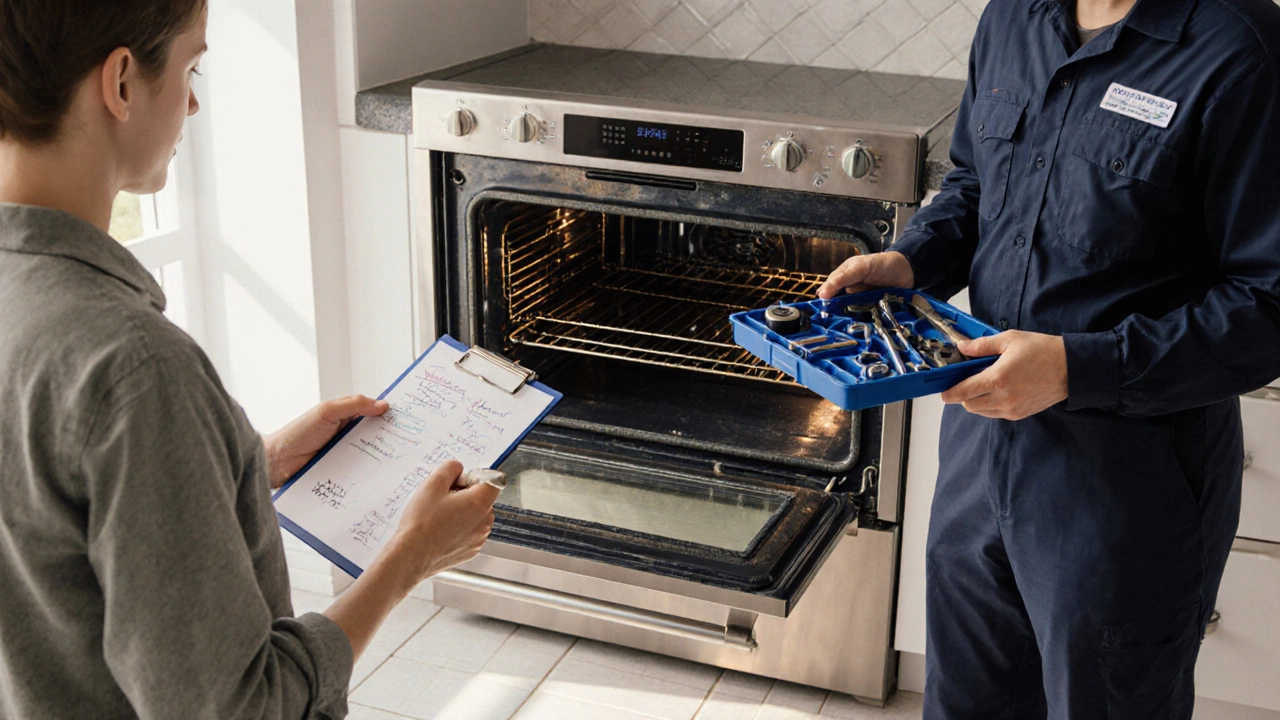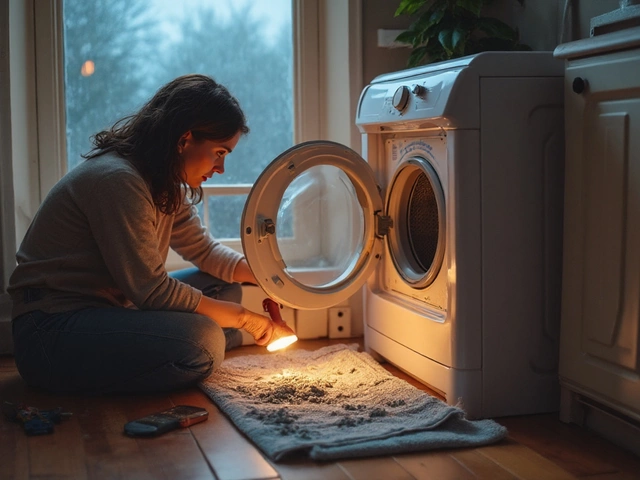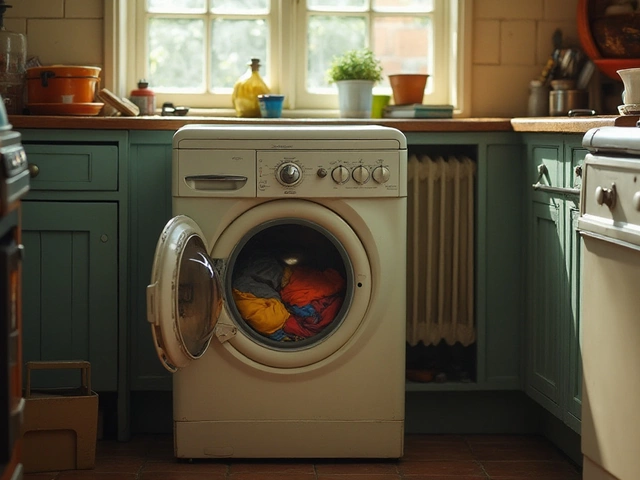Oven Repair vs Replacement Calculator
Compare Your Oven Repair vs Replacement Costs
Enter your oven details and get a personalized cost comparison based on 2025 Brisbane pricing.
Estimated Repair Cost
$0.00
Estimated Replacement Cost
$0.00
Energy Savings
0 kWh/year
$0.00/year
When your oven starts acting up, the first question you hear is almost always the same: oven repair or buy a new one? The answer isn’t a one‑size‑fits‑all; it depends on the fault, the age of the appliance, and how much you’re willing to spend upfront versus over time. In this guide we break down every cost factor, walk through the most common breakdowns, and give you a clear decision‑making framework so you can stop guessing and start saving.
Typical Oven Failures You’ll Encounter
Knowing what’s wrong helps you estimate the repair bill before the technician even shows up. Below are the five most frequent problems in Australian homes:
- Heating element failure - The element that glows red either burns out or develops cracks.
- Thermostat or temperature sensor issues - The oven won’t heat to the right temperature.
- Ignition problems (gas ovens) - No spark or a weak spark, causing no flame.
- Door seal wear - Heat leaks out, extending cooking times and raising energy use.
- Control board glitches - Touchscreen or dial becomes unresponsive.
Most of these can be fixed with a single part swap, but a few (like a busted control board) can get pricey.
Breaking Down the Cost of Oven Repair
Repair costs usually fall into three buckets: parts, labour, and service call fees. Below is a realistic 2025 snapshot for Brisbane, based on quotes from licensed appliance technicians and local repair shops.
| Component | Typical Price (AUD) | Notes |
|---|---|---|
| Service Call Fee | $80‑$120 | Includes travel, diagnosis, and a 30‑minute visit. |
| Replacement Part | $30‑$350 | Heating element $40‑$80, thermostat $50‑$120, ignition $80‑$150, control board $200‑$350. |
| Labour (hourly) | $70‑$100 per hour | Most repairs take 1‑2 hours; complex board swaps may reach 3‑4 hours. |
Adding the figures together, a simple element swap might cost $110‑$200 total, while a full control‑board replacement can climb to $500‑$650. Keep in mind that many service providers offer a “no‑fix, no‑charge” policy if the part is unavailable on the spot.
What Buying a New Oven Actually Costs
Replacing the appliance brings a whole new set of expenses: the retail price, delivery, installation, disposal of the old unit, and possibly a new warranty. Here’s a typical cost breakdown for a mid‑range 70‑litre electric oven in 2025.
| Item | Average Price (AUD) | Details |
|---|---|---|
| Appliance (mid‑range brand) | $1,200‑$1,800 | Brands like Bosch, Samsung, or Westinghouse. |
| Delivery & Installation | $120‑$250 | Includes connecting gas/electric, calibrating, and testing. |
| Old Oven Disposal | $40‑$80 | Council fees or private haul‑away service. |
| Extended Warranty (optional) | $80‑$150 | Covers parts & labour for 2‑3 extra years. |
Total first‑year outlay lands between $1,440 and $2,280, depending on the brand, features (self‑clean, convection, smart connectivity), and installer rates.
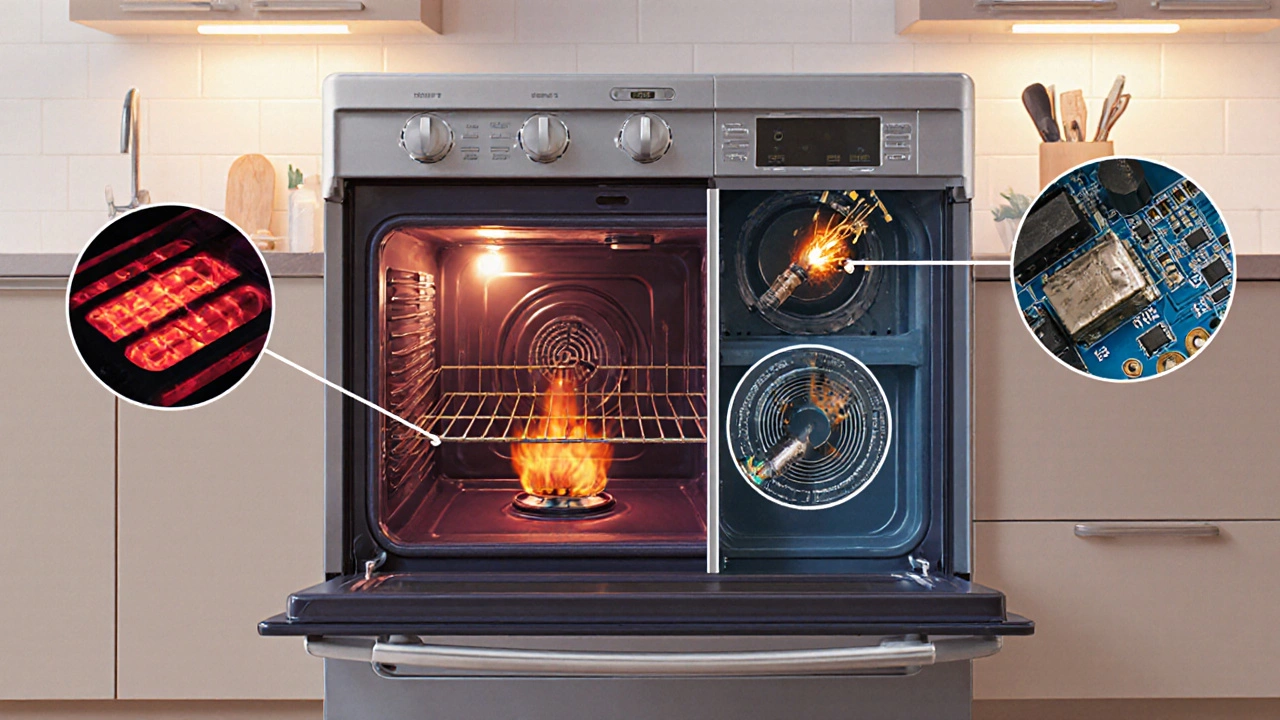
Repair vs Replace: The Decision Matrix
Instead of guessing, use this simple rule of thumb: if the repair cost exceeds 50 % of a comparable new oven, replacement usually makes more sense. Below is a quick look at how age, efficiency, and usage factor in.
- Age - Appliances older than 10‑12 years often have hidden wear (wiring, insulation) that can cause future failures.
- Energy efficiency - Newer models are rated at 3‑5 stars on the Australian Energy Rating, cutting electricity use by up to 30 %.
- Feature upgrade - If you need convection or smart controls, a new unit adds value beyond the repair.
- Warranty status - An oven still under manufacturer warranty might be repaired for free; otherwise, you’re paying out‑of‑pocket.
Here’s a side‑by‑side snapshot for a typical 8‑year‑old electric oven with a faulty heating element:
| Metric | Repair | Replace |
|---|---|---|
| Estimated Cost | $150‑$200 | $1,600‑$2,050 (incl. install) |
| Energy Rating | 3‑star (older) | 5‑star (new) |
| Future Failure Risk | Medium - other parts may age | Low - full warranty |
| Time to Fix | Same‑day (1‑2 hrs) | 2‑3 days (delivery + install) |
In this scenario, repair is a clear win if you’re tight on cash and don’t need the newer efficiency rating. But if you’re planning a kitchen remodel or want to lower your electricity bill, the extra spend on a replacement pays off within a few years.
Hidden Costs You Might Overlook
Both paths have sneaky expenses that pop up later.
- Energy consumption - An old 3‑star oven can use up to 120 kWh/year. At the 2025 average residential rate of $0.30/kWh, that’s $36 extra annually.
- Disposal fees - Some councils charge $80 for bulk appliance collection.
- Insurance premium - A new, higher‑value appliance can raise home contents insurance by $5‑$10 per year.
- Resale value - If you ever sell the house, a brand‑new oven adds to marketability.
When you add these to the spreadsheet, a $1,600 replacement can become $1,720 after the first year, while the $150 repair might rise to $180 with energy add‑on. The gap narrows but still favours repair for short‑term budgets.
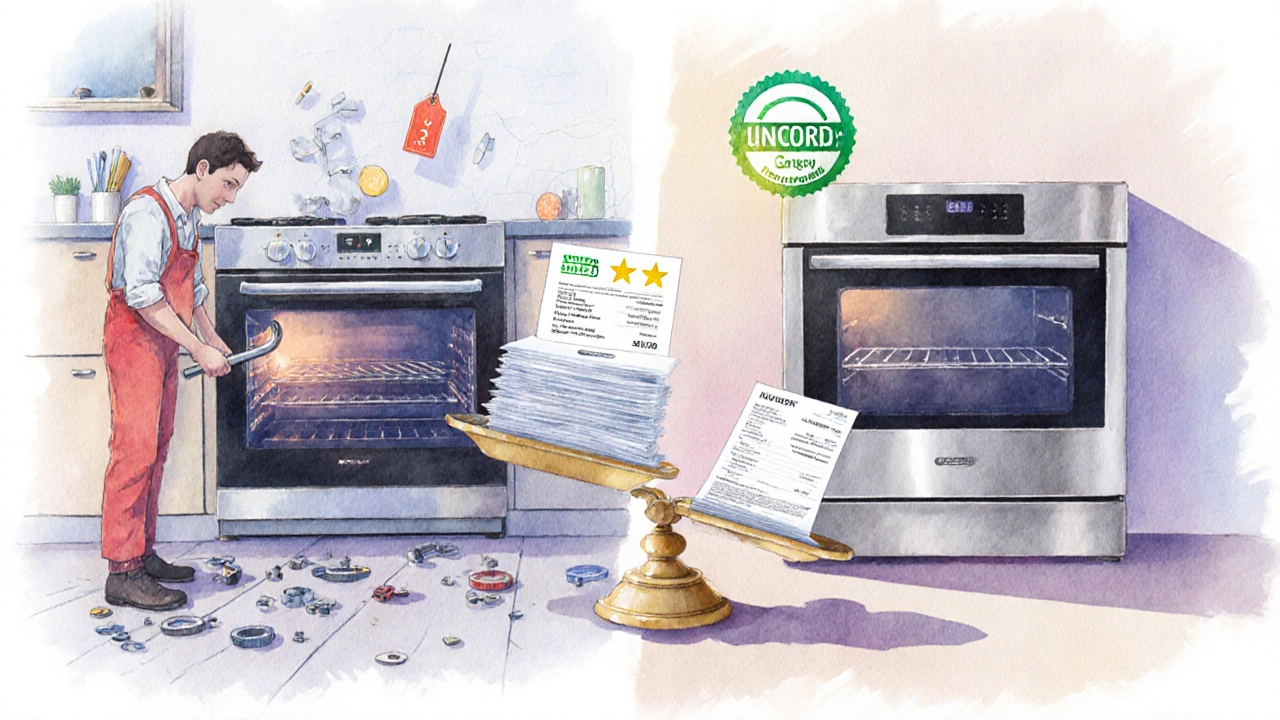
DIY Repair vs Professional Service
If you’re handy, you can chip away at the labour cost. Many parts-heating elements, thermostats, door seals-are sold online for home installation. A typical DIY repair looks like this:
- Unplug the oven and remove the back panel.
- Locate the faulty component using the service manual (often PDFs from the manufacturer).
- Swap the part, reconnect wiring, and run a self‑test.
That can shave $60‑$100 off the labour charge. However, beware of these pitfalls:
- Working with gas ovens requires a licensed plumber for safety; DIY on gas can void insurance.
- Incorrect wiring can damage the control board, leading to a $300‑$400 repair later.
- Many warranties become void if an unqualified person opens the appliance.
For most homeowners, especially those with older ovens or complex electronic boards, calling a qualified appliance technician is the safest bet.
Quick Checklist Before You Call a Technician
- Note the oven’s age and model number (usually on the door frame).
- Identify the symptom: no heat, uneven heat, error code, or strange smell.
- Check if the appliance is still under a manufacturer warranty.
- Search for known part costs online; have a ballpark figure ready.
- Ask the technician for a written estimate that separates parts, labour, and call‑out fee.
Having this info on hand often reduces the service call fee because the tech can diagnose faster.
Bottom Line: When to Repair, When to Replace
Use the following decision tree as a mental cheat‑sheet:
- If repair costs less than 50 % of a comparable new oven AND the oven is less than 10 years old, go for repair.
- If the oven is older than 10‑12 years, has multiple recurring issues, or you want a higher energy rating, replace.
- If you’re planning a kitchen remodel or want smart‑home integration, replace.
- If the fault is a simple part (heating element, thermostat) and you have the time, DIY could save $60‑$100.
Following this framework helps you avoid over‑paying for a fix that won’t last, while also preventing unnecessary early replacements.
How long does an average oven repair take?
Most common fixes-like swapping a heating element or thermostat-take 1‑2 hours. More complex board replacements can stretch to 3‑4 hours, plus travel time.
Can I get a free repair if my oven is still under warranty?
Yes. Most manufacturers cover parts and labour for defects that arise during the warranty period, though you may still pay a modest service call fee.
Is it cheaper to replace an old gas oven with an electric one?
Upfront, a new electric oven can be $200‑$400 cheaper than a high‑end gas model. However, you’ll need to factor in the cost of installing a new electrical circuit, which can add $300‑$500.
What are the energy savings of a 5‑star oven compared to a 3‑star model?
A 5‑star oven typically uses 20‑30 % less electricity. For a family that cooks 200 kWh per year, that translates to roughly $12‑$18 saved annually at current rates.
Should I try DIY repair on a gas oven?
Only if you have a licensed plumber on hand. Gas connections are regulated, and an improper fix can cause leaks, which are dangerous and may void insurance.
